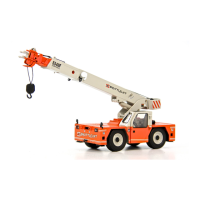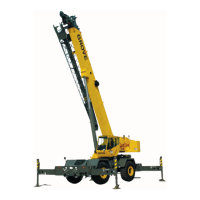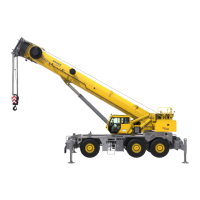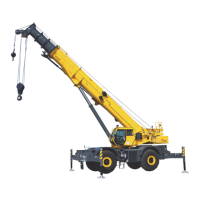4-17
TMS800E SERVICE MANUAL BOOM
Published 01-29-2014, Control # 496-00
TELESCOPE CIRCUIT
Description
The boom telescope circuit consists of the telescope electric
controller, telescope directional control valve, holding valve,
and the upper and lower telescope cylinders.
The telescope control valve is the closed spool type and is
described under Valves, page 2-22.
Refer to Valves, page 2-22 for a complete description of the
hydraulic remote controller.
The boom telescope system has a lower and an upper
telescope cylinder. Both the lower and upper telescope
cylinder has a 16.5 cm (6.5 in) bore. Foreign material is
prevented from entering the cylinder by a wiper seal during
rod retraction. O-ring seals prevent internal and external
leakage. Refer to Cylinders, page 2-54 for a complete
description of the telescope cylinders.
A holding valve is threaded into a port block on the rod end of
the upper telescope cylinder. The holding valve for the
second stage of the lower telescope cylinder is mounted into
the port block on the barrel end of the second stage barrel.
The holding valves function during the retraction, extension,
or holding operation. When holding the boom section at a
given length, oil is trapped in the cylinder by the holding
valve. Refer to Valves, page 2-22 for a complete description
of the holding valve.
Theory of Operation
Flow from the pump travels to the telescope directional
control valve. Movement of the foot pedal for telescope
functions from neutral sends an electric signal to the
directional control valve to shift the spool in the directional
control valve. This aligns the appropriate passages in the
control valve to route oil to the telescope cylinders.
Also refer to BOOM - THEORY OF OPERATION in this
Section.
Maintenance
Troubleshooting
SYMPTOM PROBABLE CAUSE SOLUTION
1. Erratic operation of
extending
telescoping
cylinder.
a. Low hydraulic oil level. a. Check for leaks. Repair any found.
Replenish hydraulic oil to proper level.
b. Damaged relief valves. b. Repair or replace relief valves.
c. Air in telescope cylinder. c. Bleed by lowering telescope cylinder
below horizontal.
d. Low engine rpm. d. Increase engine rpm to recommended
setting.
e. Lack of lubrication on boom sections. e. Properly lubricate all boom sections.
f. Extremely tight jib sheaves. f. Inspect and properly lubricate jib
sheaves.
g. Improper boom alignment caused from
side loading.
g. Reduce and properly hoist load.
h. Worn boom wear pads. h. Replace wear pads and properly
lubricate.
i. Distorted boom section. i. Replace distorted section.
j. Damaged telescope cylinder. j. Repair or replace cylinder.
k. Clogged, broken, or loose hydraulic
lines or fittings.
k. Clean, tighten, or replace lines or
fittings.
l. Damaged control valve. l. Repair or replace control valve.
Reference Only

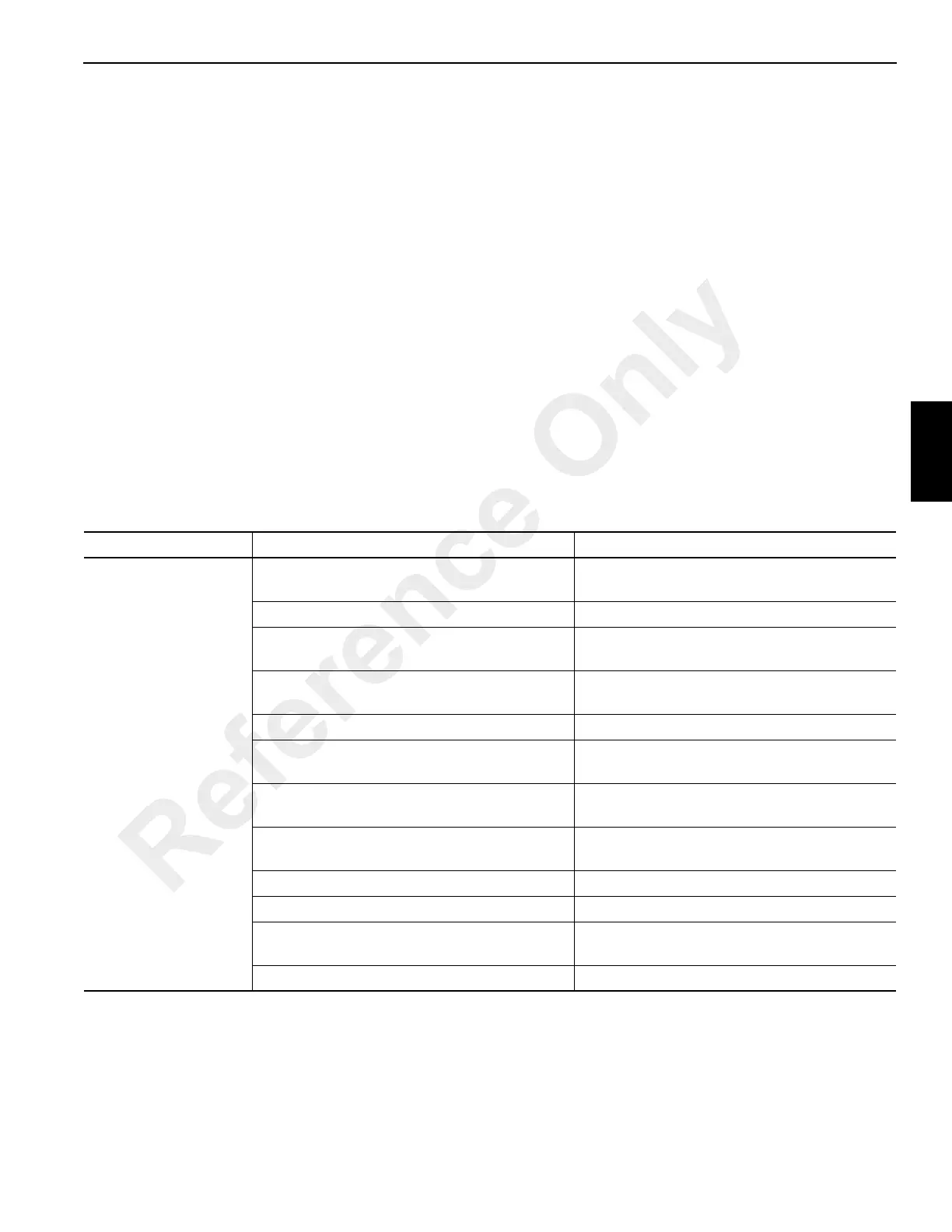